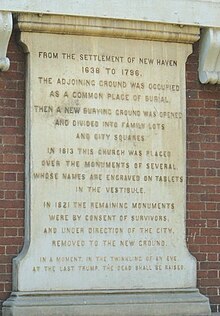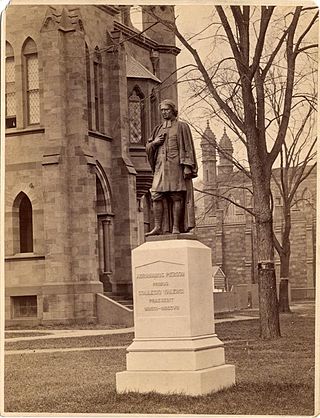

David Atwater ( October 8, 1615 - October 5, 1692) was a founder of the Colony of New Haven, Connecticut. He was the first of the New Haven Colony who was sworn a freeman of the United Colony. [1]


David Atwater ( October 8, 1615 - October 5, 1692) was a founder of the Colony of New Haven, Connecticut. He was the first of the New Haven Colony who was sworn a freeman of the United Colony. [1]

Born in 1615 Royton, Lenham, Kent, England son of John Atwater and Susan Narsin, came to North America June 26, 1637, when he was 22. He sailed to America on a ship named Hector with his brother Joshua and sister Ann also on board. Traveling with him were John Davenport and Theophilus Eaton (founders of New Haven).
From Boston the group made their way to the Quinnipiack (home of the Quinnipiack Indians). But returned to Boston due to their lack of preparedness for the New England winter. His Brother and 7 others remained in New Haven. He returning in the spring of 1638 and settled there. On June 4, 1639, he signed the plantation covenant in Francis Newman's barn along with 20 others. The valuation of their land was £500 and up.
A farm was assigned to him in the "Neck" [2] the tract between the Mill and Quinnipiac Rivers. In 1685, David Atwater Jr. inherited his father's home, now believed to be on View and Ridge Streets. The will described it as an "old House, Barn and Orchard, [...] and twelve acres, lying on both sides ye creek, adjoining to meadow of Isaac Turner's, and twenty acres of upland, ten to ye Cornfield and ten in ye Neck, soth halfe that peese of land fensed in on ye west side of Road and ye Rock." The rest of his property was bequeathed to his son Samuel Atwater, including David's "dwelling house, barne and other buildings, with the Orchard". Remnants of the apple orchards and plants from gardens long ago are thought to still be in the area. [3]
February 7, 1668: He was present at a town meeting when action was taken to establish the Hopkins Grammar School. His name is on the 1685 list of names of Proprietors of New Haven, CT.
David married Demaris Sayre (daughter of Thomas Sayre of Southampton, New York) around March 10, 1646. Children: Mercy Born February 29, 1647, Damaris November 12, 1648, David July 13, 1650, Joshua January 11, 1652, John November 1, 1654, Jonathan July 12, 1656, Abigail March 3, 1659, Mary March 31, 1662, Samuel September 17, 1664, Ebenezer January 13, 1666.
David Atwater died October 5, 1692, in Cedar Hill, New Haven and was buried at the Center Church on the Green Church yard, New Haven, Connecticut.

Abraham Pierson was an American Congregational minister who served as the first rector, from 1701 to 1707, and one of the founders of the Collegiate School — which later became Yale University.

Theophilus Eaton was a wealthy New England Puritan merchant, diplomat and financier, who took part in organizing and financing the Great Puritan Migration to America. He was a founder of Massachusetts Bay Colony, and a founder and eventual governor of New Haven Colony. He also cofounded the town of Greenwich in Connecticut and Eaton's Neck in New York.

The New Haven Colony was a small English colony in Connecticut from 1638 to 1664, with outposts in New York, New Jersey, Pennsylvania, and Delaware.
Thomas Willett was a Plymouth Colony fur trader, merchant, land purchaser and developer, Captain of the Plymouth Colony militia, Magistrate of the colony, and was the 1st and 3rd Mayor of New York, prior to the consolidation of the five boroughs into the City of New York in 1898.

Cedar Hill is a neighborhood in New Haven, Connecticut. It includes portions of the city-designated neighborhoods of East Rock, Quinnipiac Meadows, and Mill River. Cedar Hill was named for cedar trees that were once plentiful there in 1665. The area was divided from the local surroundings by the construction of I-91 in the 1960s. Cedar Hill's boundary runs from James Street, up the Mill River, to Rice Field, over Indian Head Rock, to the Hamden town line, across to Middletown Avenue, to the Eastern side of State Street, back up to James Street.
Thomas Welles is the only person in Connecticut's history to hold all four top offices: governor, deputy governor, treasurer, and secretary. In 1639, he was elected as the first treasurer of the Colony of Connecticut, and from 1640 to 1649 served as the colony's secretary. In this capacity, he transcribed the Fundamental Orders into the official colony records on 14 January 1638, OS,. He was the magistrate during the first witch trials, the Hartford or Connecticut Witch Trials.
Richard Treat was an early settler in New England and a patentee of the Royal Charter of Connecticut, 1662.

Danyell "Daniel" Gookin was a Munster colonist, settler of Virginia and Massachusetts, and a writer on the subject of American Indians.

Lieut. Samuel Leavitt (1641–1707) was an early colonial American settler of Exeter, New Hampshire, one of the four original towns in the colony of New Hampshire, where Leavitt later served as a delegate to the General Court as well as Lieutenant in the New Hampshire Militia, and subsequently as member of the New Hampshire House of Representatives. The recipient of large grants of land in Rockingham County, Leavitt held positions of authority within the colonial province.
Robert Abell was born in about 1605 in Stapenhill, Derbyshire, England. He emigrated to New England in 1630 as part of the first wave of the Great Migration, and was among the early settlers of the Massachusetts Bay Colony, settling first in Weymouth, and subsequently in Rehoboth, where he died on June 20, 1663.

Lyman Hotchkiss Atwater was an American Presbyterian philosopher.
John Brockett was born in England. He was one of the early British settlers in the area of New Haven, Connecticut, and later helped found the town of Wallingford which he represented in the Connecticut General Assembly.

Jeremiah Dummer was the first American-born silversmith, whose works are today highly valued, two items of his having sold in 2004 and 2007 both for $204,000. He was also noted as a portrait painter and as an engraver, who created the first paper currency in Connecticut Colony. His son Jeremiah Jr. was involved with the foundation of Yale University.
Samuel Skelton was the first pastor of the First Church of Salem, Massachusetts, which is the original Puritan church in North America.
Lieut. Joseph Judson was an early New England colonist best known for co-founding the town of Woodbury, Connecticut.
John Bowton was a founding settler of Norwalk, Connecticut. He served as a deputy of the General Assembly of the Colony of Connecticut from Norwalk in the sessions of October 1671, October 1673, May 1674, May 1675, October 1676, May and October 1677, May 1678, October 1679, May 1680, May 1681, May and October 1682. May 1683, and May and October 1685.
William Jones was an English lawyer who emigrated to the United Colonies and became the twenty-fourth Deputy Governor of the Colony of Connecticut.
John Benedict was a member of the Connecticut House of Representatives from Norwalk, Connecticut Colony in the sessions of May 1722 and May 1725.
Mathew Waller was an early settler of New London, Connecticut Colony. He was among the six hired in 1650 by John Winthrop Jr.–the founder of New London –to build the town's first gristmill. Before settling in New London, Waller lived in Salem and Providence Plantations.

Comfort Starr was a 17th-century English physician who emigrated to the Thirteen Colonies. He was one of the five founders of Harvard College.